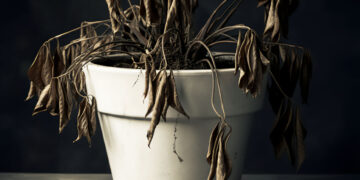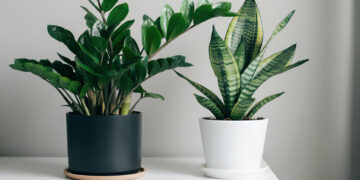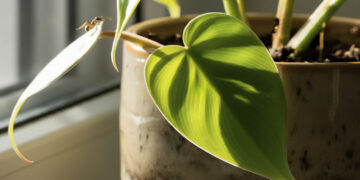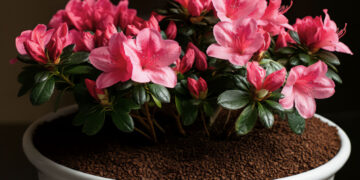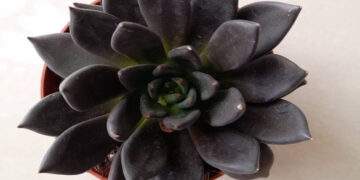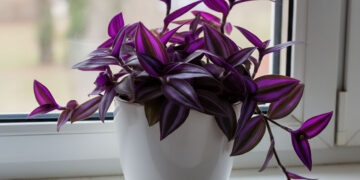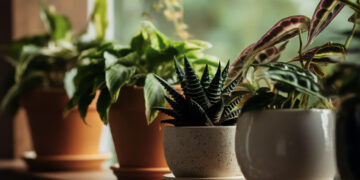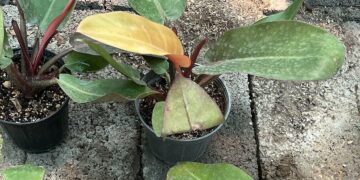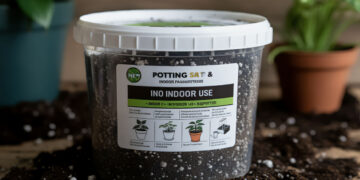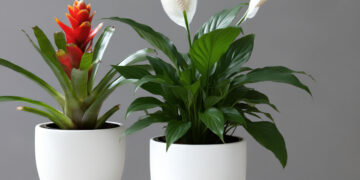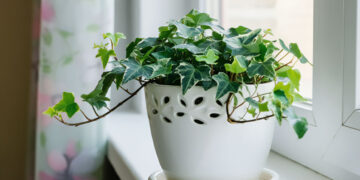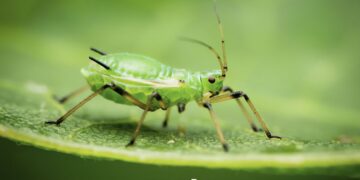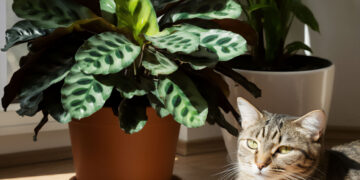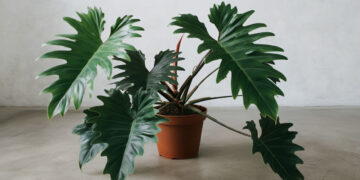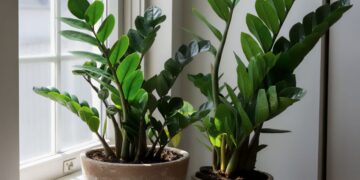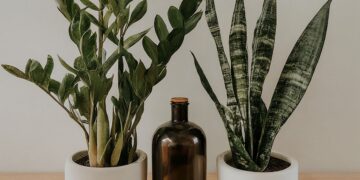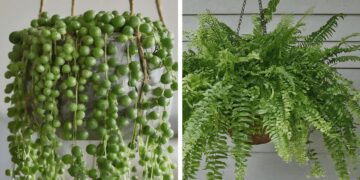In this article, I’ll share caring tips for tall, low-light houseplants and introduce six stylish options that grow beautifully while enhancing your home decor.
Care Tips for Tall Houseplants that Need Low Light
– Many people believe that bigger plants need watering more frequently.Overwatering will rot the root and cause many more problems for the plant. It is essential to let the soil get dry between waterings and make a good watering plan for the plant based on its own needs and the light it receives. Suppose you want to prevent water from accumulating at the roots. In that case, you should know that using well-draining soil and a pot that drains appropriately is essential for your plant’s health.
– If your plants are getting too tall, you should consider using stakes to make them stable and help them stand straight. This won’t let them lean or even fall over as they get taller.
– You should rotate your plants from time to time so that they get an even amount of light and grow nicely.
– It’s better to carefully trim the tops and remove any dead leaves to have a perfect shape and control the height of the plant.
– As your plants grow, their roots need more space. Therefore, you should move them to bigger pots to let them spread out and grow freely.
1. Kentia Palm
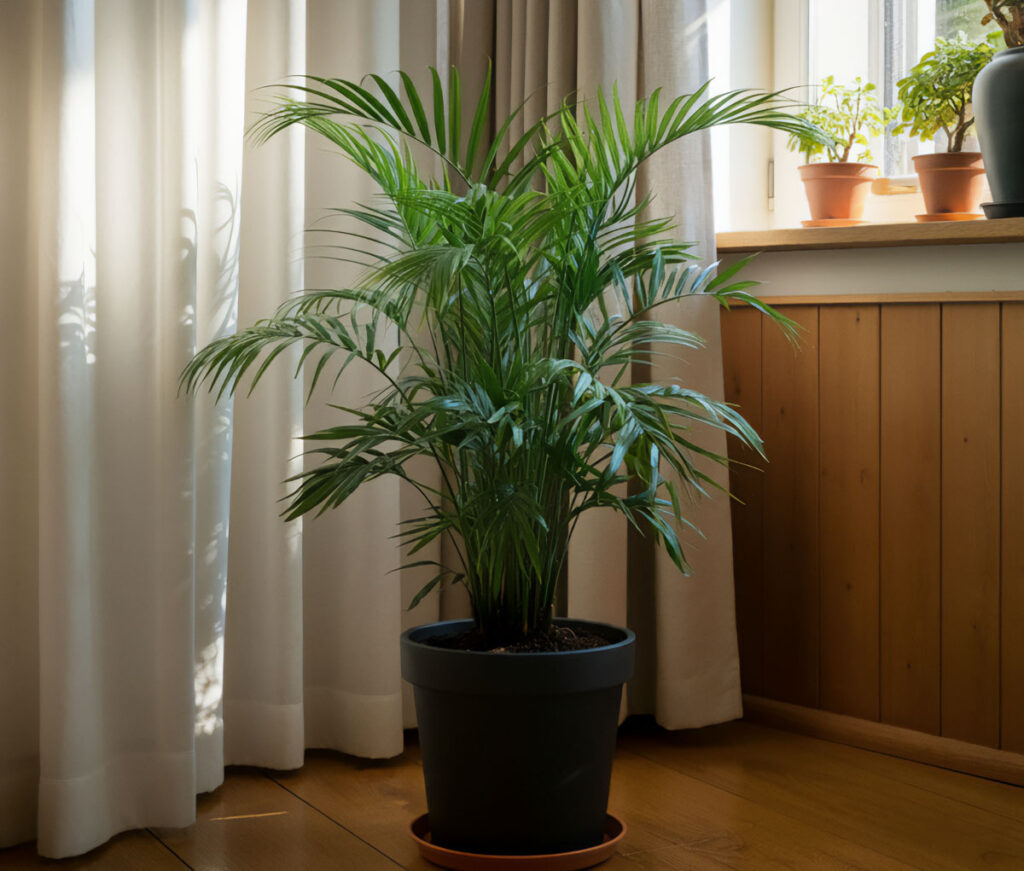
Taking care of Kentia Palm is easier than you think. It’s perfect for indoors, needs low to medium light. It would help if you watered it when one inch of the top soil is dry, but know that overwatering will make the roots rot. It can grow with average humidity, but spraying water on top of it will be helpful. When it grows, start giving it a little fertilizer every few months, and the job is done!
Height: Up to 10 feet
Toxic to Pets or Humans: No
2. Parlor Palm
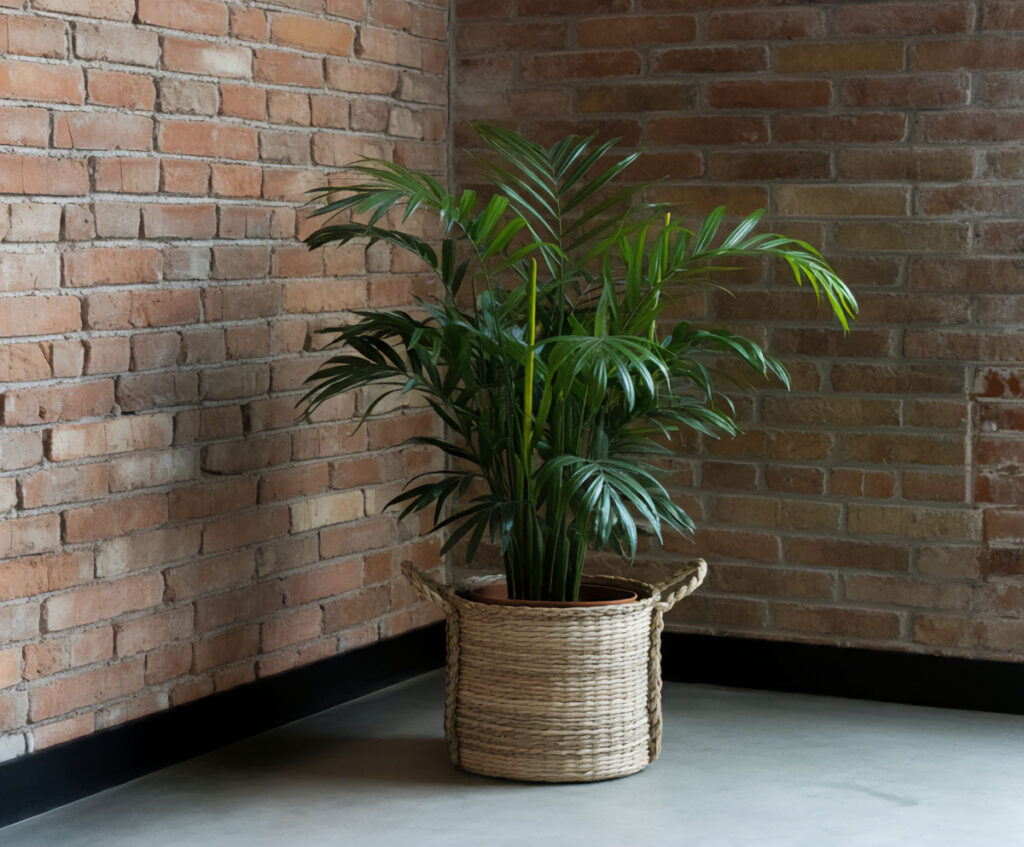
The Parlor Palm is a tough and tall houseplant. Low indirect light is all it needs. It’s better if it stays in a highly humid place. Always make sure that the soil remains moisturized and won’t get watered too much. This plant grows slowly and doesn’t need much of a fertilizer.
Height: Up to 8 feet
Toxic to Pets or Humans: No
3. Dracaena Fragrans (Corn Plant)
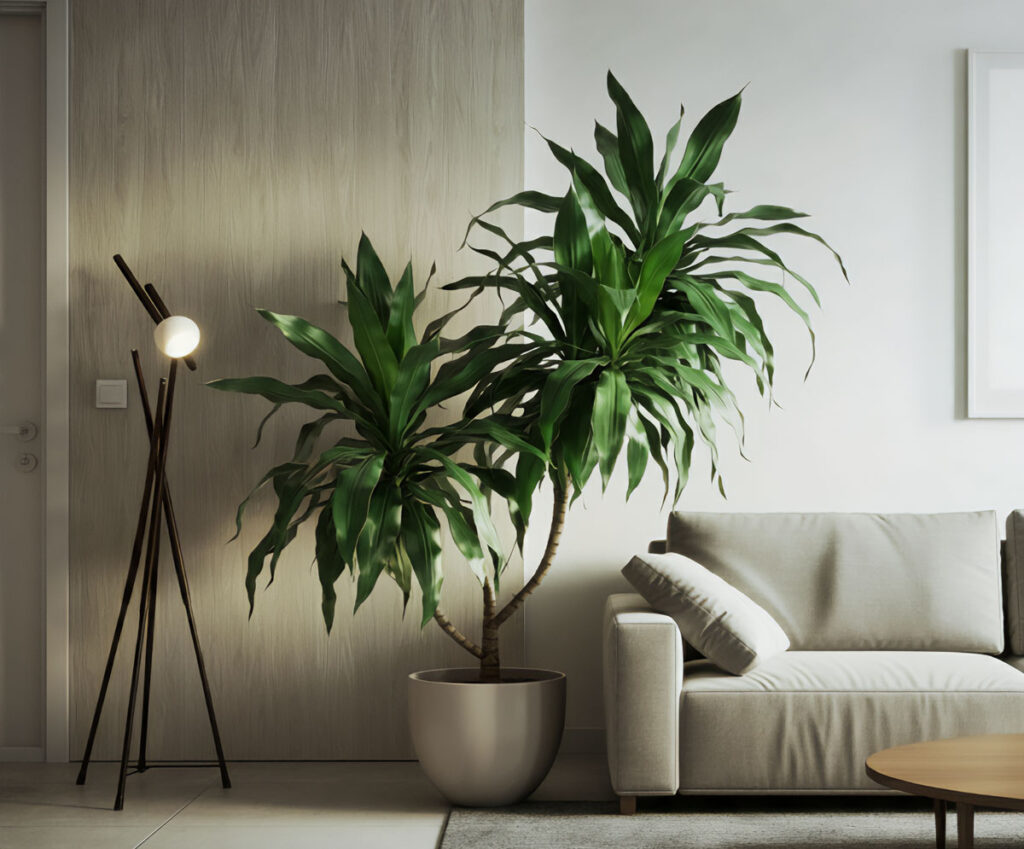
This plant grows in low light. Leaving it under direct sunlight will burn the leaves. Water it when the top few inches of the soil is dry. It can handle different humidity levels, but misting it sometimes helps. Give it a little fertilizer when it starts growing.
Height: Up to 6 feet
Toxic to Pets or Humans: Yes
4. Rubber Plant (Ficus elastica)
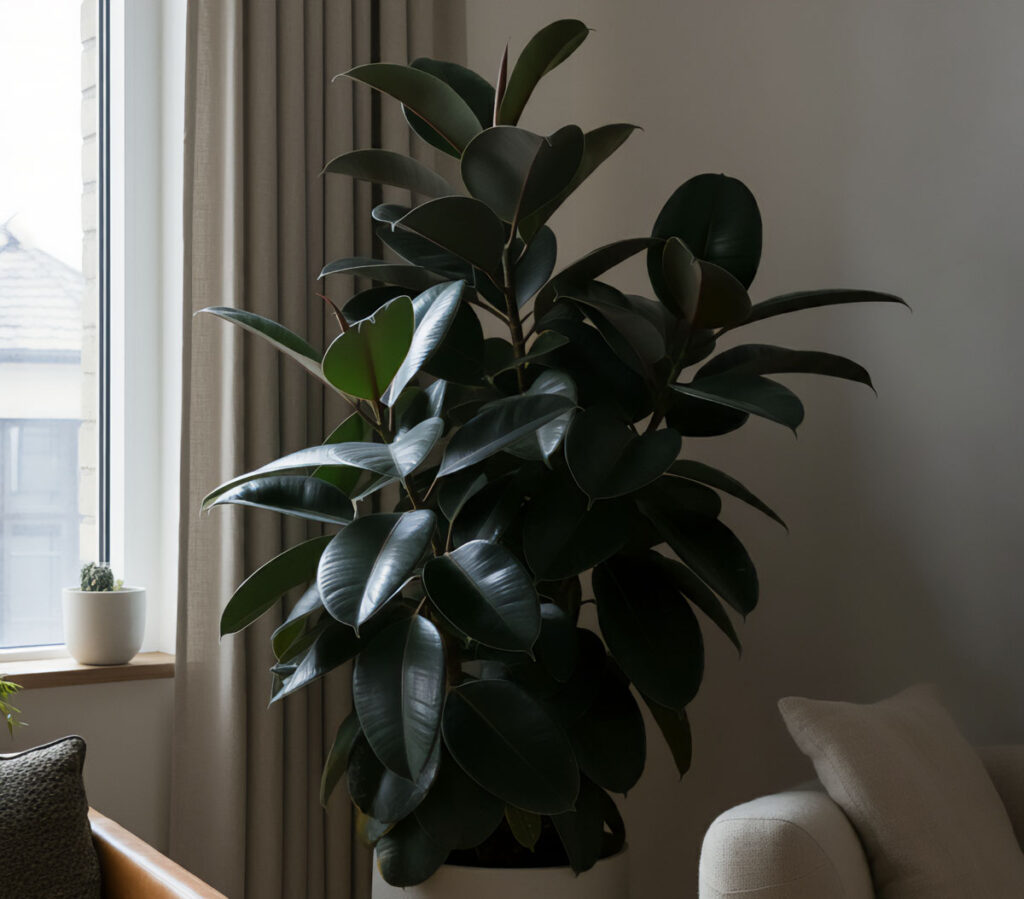
This plant is naturally one of the best houseplants for health. Ficus elastica needs indirect light. Don’t water it unless the soil is dry, and be careful not to overwater it. If you want your plant to grow well, place it in a humid environment. Trimming will encourage it to grow bushier. And finally, remember to fertilize it every month.
Height: Up to 10 feet
Toxic to Pets or Humans: Yes
5. Bamboo Palm (Chamaedorea seifrizii)
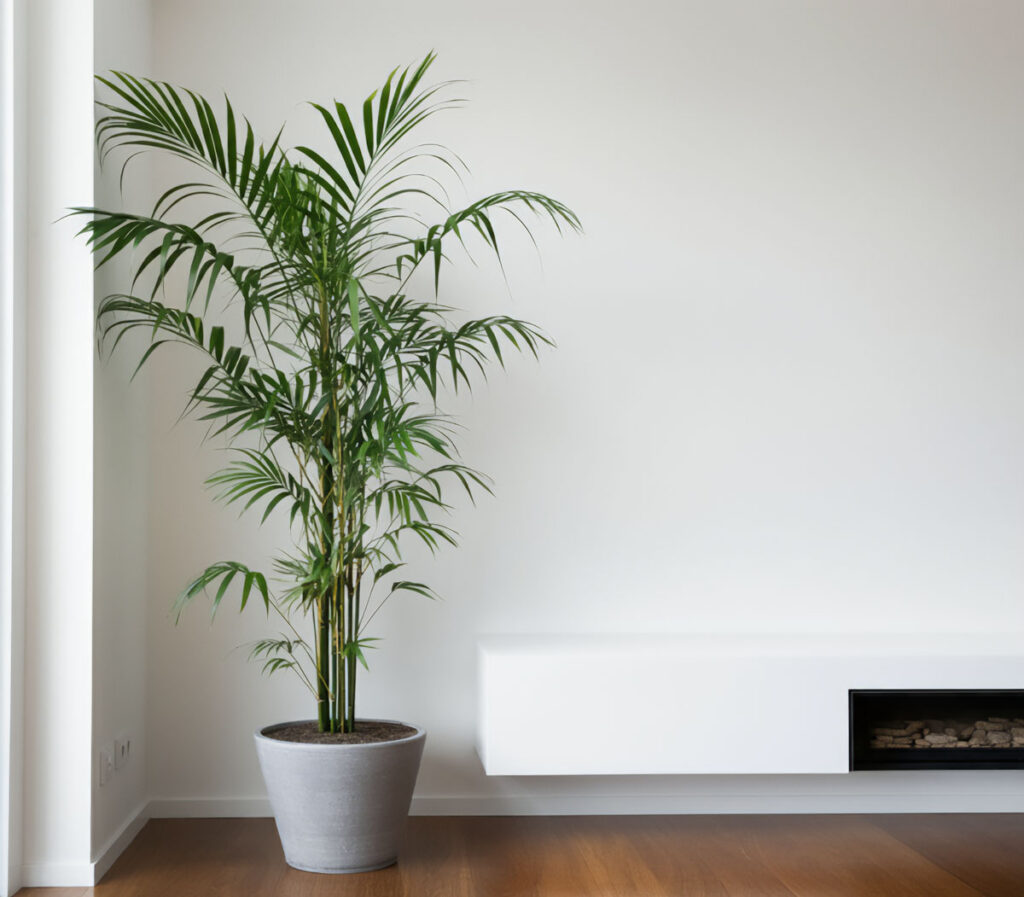
This tall houseplant only needs indirect light, moist soil (not wet), and highly humid air. If you use a humidifier, you don’t need to worry about humidity anymore. If it grows slowly, don’t worry; that’s natural for bamboo. Just remember to fertilize it once a month. Also, the bamboo palm is one of the best indoor plants for air purifying.
Height: Up to 7 feet
Toxic to Pets or Humans: No
6. Philodendron Bipinnatifidum (Lacy Tree Philodendron)
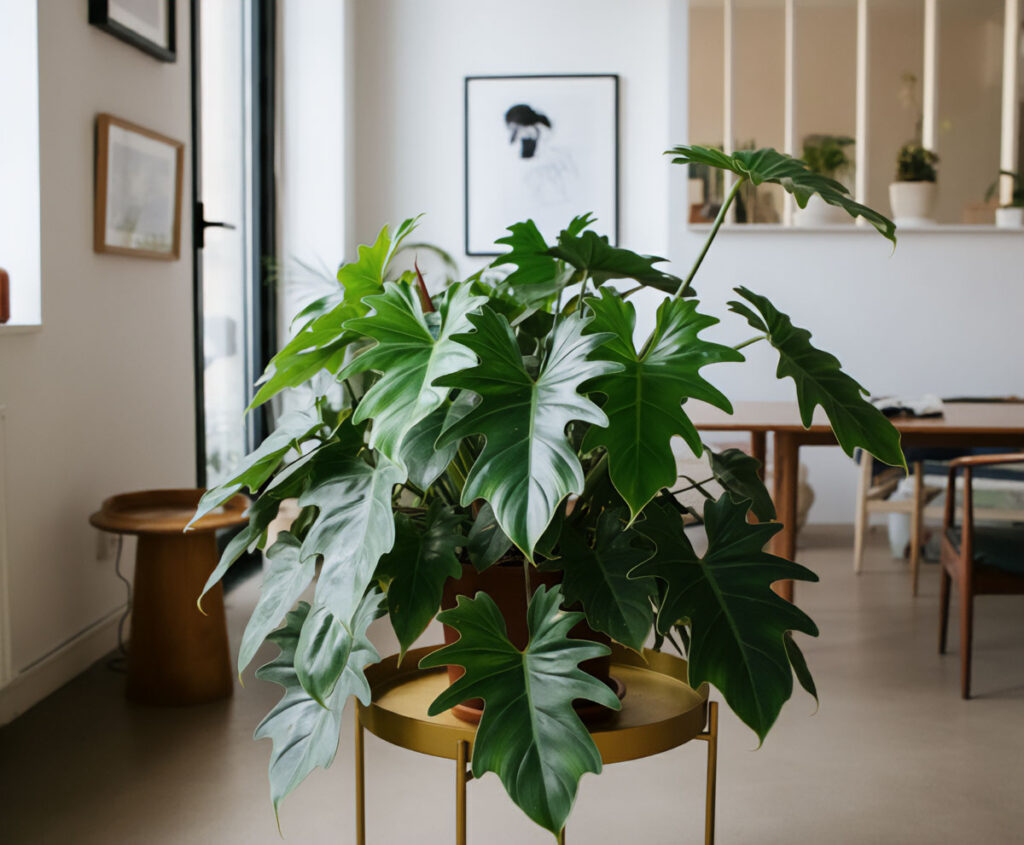
This plant is one of the big-leaf houseplants. It’s super easy to care for and grows well in low light. Water it when the top of the soil is dry, and fertilize it only once a month. Since it’s a tall houseplant, make sure you provide enough space for it because it can grow quite large.
Height: Up to 6 feet
Toxic to Pets or Humans: Yes
If you have any questions about these tall, low-light houseplants, feel free to ask in the comments. I’m happy to help!
